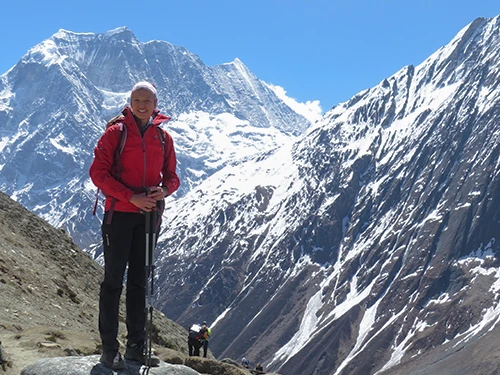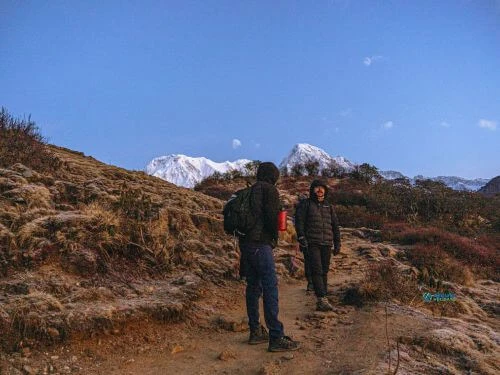The Everest Chola Pass Trek is a high-altitude circuit in Nepal’s Everest region, which combines the classic Everest Base Camp (EBC) trail with the peaceful Gokyo Valley. These two are linked by the icy and challenging Cho La Pass, which stands at 5,420 meters.
Over 14 days, the trek will take you through lush valleys all around, Sherpa villages, glacial lakes, and stunning mountain passes. This route offers a fuller and more rewarding experience than the standard EBC trek.
Instead of retracing your steps, this Cho La Pass trek forms a loop that includes Everest Base Camp, Kala Patthar, Gokyo Lakes, and the Cho La Pass— all while immersing you in rich local culture and unforgettable Himalayan scenery.
Many trekkers choose the standard Everest Base Camp route — and while it’s iconic, it follows the same trail back down with limited variety and exposure to the broader Everest region.
That means you miss out on places like the Gokyo Lakes, the dramatic Cho La Pass crossing, and the peaceful alpine valleys, which few others get to explore. If you're going all the way to the Himalayas, why settle for just one side of the story?
The Everest Chola Pass Trek gives you the whole picture. You'll walk through Everest’s legendary paths and venture into hidden corners only accessible via high passes. It’s a thrilling blend of physical challenge, mountain beauty, and local culture — ideal for those who want more than a typical trek.
Book Now Your Everest Chola Pass Trek with Abound Holidays! Contact Us Now!
Why is the Everest Chola Pass Trek a Must?
Most people stop at Everest Base Camp. But this trek doesn’t stop — it circles the giants.
You’ll explore the base camp and lesser-visited gems like Gokyo Ri and the emerald-blue Gokyo Lakes. You’ll walk through contrasting landscapes — green valleys, rugged glaciers, high passes, and glacial lakes. And you’ll push your limits at Cho La Pass, which adds mountaineering flavor to your Himalayan adventure.
How Fit Should You be for the Everest Chola Pass Trek?
This trek is challenging, especially the Cho La Pass crossing. While beginners can complete the trek with proper preparation and acclimatization, previous trekking experience is a bonus.
You should be:
- Able to walk 6–8 hours daily
- Physically active for at least 2–3 months prior
- Comfortable with rocky, icy, and steep terrain
Everest Chola Pass Trek Cost
The cost of the Cho La Pass trek can vary quite a bit because it depends on things like how long your trek is, how many people are in your group, the services you choose, and of course, your own spending habits along the way.
Most itineraries for Cho La Pass are about 18 days in total. This includes your arrival in Kathmandu, a few sightseeing days, and the return journey. Out of those, around 14 days are spent on the actual trail. If you decide to add extra acclimatisation days, side trips, or combine this trek with another route, the cost will naturally go up since you’ll need more accommodation, food, and logistics.
Your group size also makes a big difference. Larger groups usually pay less per person because costs like guides, porters, and transportation are shared. But if you’re trekking solo or with just one or two people, the price can be a little higher since you’re covering those costs on your own.
On top of that, there are extra expenses you’ll want to factor in — like permits, guide and porter fees, snacks, and the occasional money drain on better meals or accommodation.
Important Information About Everest Chola Pass Trek
The Everest Chola Pass Trek isn’t just a trek — it’s a mix of adventure, culture, and jaw-dropping views of the Everest region. But to truly enjoy it, you’ll want to know the best time to go, how challenging it is, and what to expect with permits, weather, and accommodations. Let’s break down everything you need to plan this journey right.
Best Time for Everest Chola Pass Trek
If you want to enjoy the Everest Chola Pass at its best, it’s all about trekking in the right season. Weather conditions play a huge role in how challenging and rewarding your journey will be.
Season | Months | Highlights |
Spring | Mar – May | Clear skies, rhododendron bloom |
Autumn | Sep – Nov | Best weather and visibility |
Winter | Dec – Feb | Cold, possible snow at Cho La |
Monsoon | Jun – Aug | Wet and slippery trails, not ideal |
Everest Chola Pass Trek Weather
The weather on the Everest Chola Pass Trek can be unpredictable, especially at higher altitudes. Understanding seasonal conditions will help you plan a smoother and safer journey.
Month | Temperature (°C) | Rain/Snow | Trail Conditions | Visibility |
January | -12 to 5 | Snow likely | Icy, cold, fewer trekkers | Clear but freezing |
February | -10 to 6 | Snow possible | Cold, some closures at Cho La | Clear and crisp |
March | -6 to 10 | Low | Melting snow, fresh bloom | Great visibility |
April | -2 to 12 | Low | Dry trails, ideal trekking | Excellent |
May | 0 to 15 | Rising humidity | Warm days, pre-monsoon clouds | Good, slight haze |
June | 5 to 17 | Monsoon begins | Wet, muddy, leech-prone | Poor visibility |
July | 6 to 18 | Heavy rain | Slippery, landslide risk | Foggy, not ideal |
August | 5 to 17 | High rainfall | Rainy, potential delays | Poor |
September | 2 to 15 | Clearing skies | Fresh, lush trails | Very good |
October | -3 to 12 | Very low | Dry, perfect trekking weather | Crystal clear |
November | -8 to 8 | Occasional snow | Cold nights, stable weather | Excellent |
December | -10 to 6 | Snow likely | Icy sections at Cho La | Clear but cold |
Everest Chola Pass Trek Difficulty
This trek isn’t the easiest, but it’s not extreme either — it’s a mix of steep climbs, rocky trails, and high-altitude passes. Being prepared makes all the difference.
- High-altitude terrain above 5,000m
- Icy, steep section while crossing Cho La Pass
- Physically demanding, especially with unpredictable weather
Required Permits & Regulations for Everest Chola Pass Trek
Before you start the trek, make sure you’ve got the required permits and registrations. These are mandatory for all trekkers in the Everest region.
Sagarmatha National Park Entry Permit
- Cost: NPR 3,000 (around USD 25)
- Needed to enter the protected area
Khumbu Pasang Lhamu Rural Municipality Permit (KRMP)
- Cost: NPR 2,000 (around USD 15)
- Issued at the Lukla checkpoint
TIMS card
- Cost: NPR 2,000 (around USD 15)
- Issued by the Nepal Tourism Board (NTB)
Don’t worry, we at Abound Holidays will take care of all your permits.
Contact us today to book your Everest Chola Pass Trek Package with Abound Holidays.
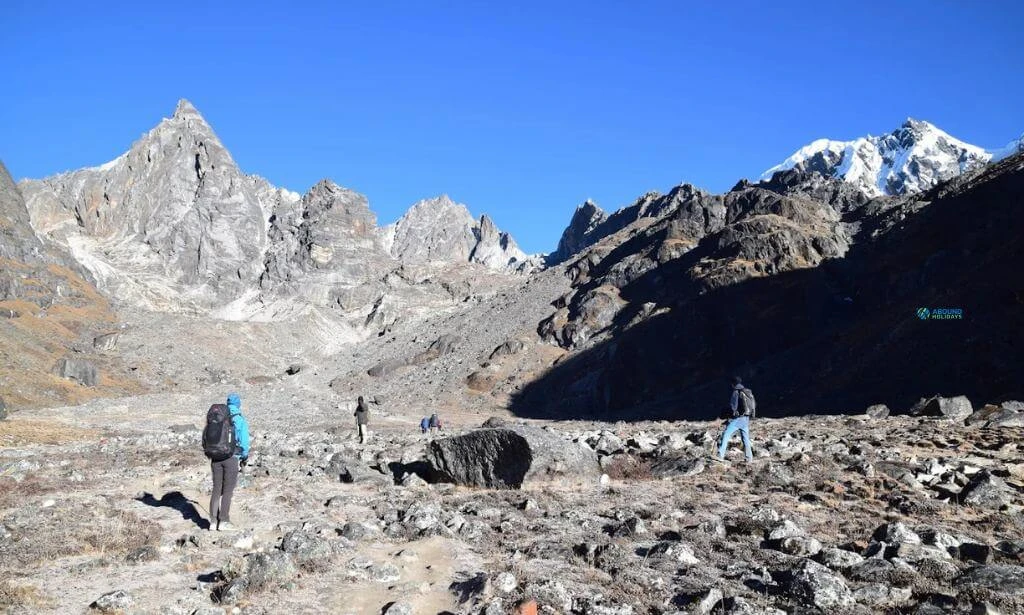
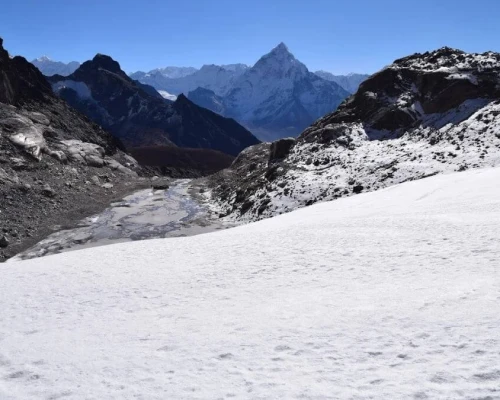
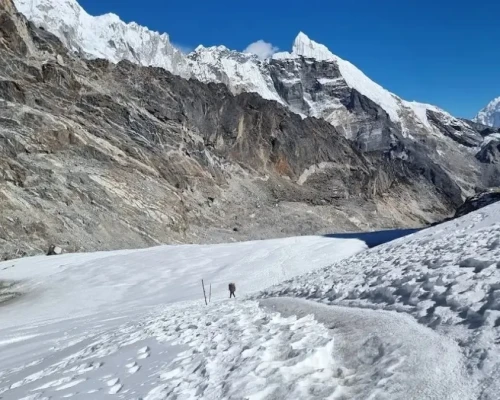
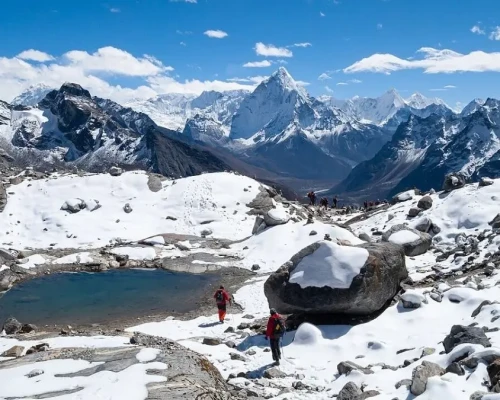
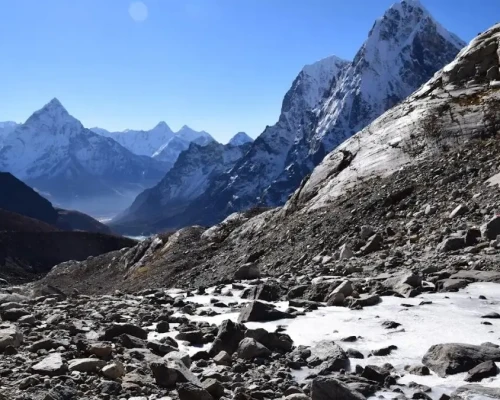

 based on 5 reviews
based on 5 reviews